Van Cleef & Arpels’ stellar jewellery collection inspired by astronomer Camille Flammarion
A dazzling new jewellery collection has been inspired by illustrations of heavenly bodies 19th-century French astronomer Camille Flammarion.
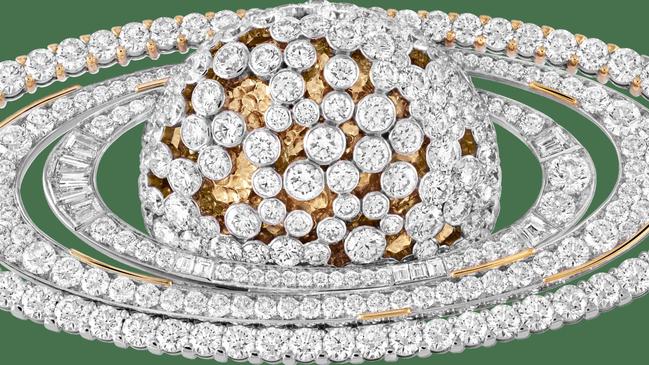
“What thoughtful soul could look at brilliant Jupiter with its four attendant satellites, or splendid Saturn encircled by its mysterious ring, or a double star glowing scarlet and sapphire in the infinity of night, and not be filled with a sense of wonder?”
This quote from French astronomer and author Camille Flammarion, written in 1880, encapsulates the beauty and mysterious nature of the night skies – and what lies beyond them – that has inspired writers, artists and craftsman for centuries. It is this sense of wonder and possibility that is the key theme of the latest 133-piece high jewellery collection from French luxury house Van Cleef & Arpels.
One of Flammarion’s key works, Popular Astronomy, is front and centre of the collection, and the illustrations he created of the planets, stars and worlds that exist beyond ours is central to the motif.
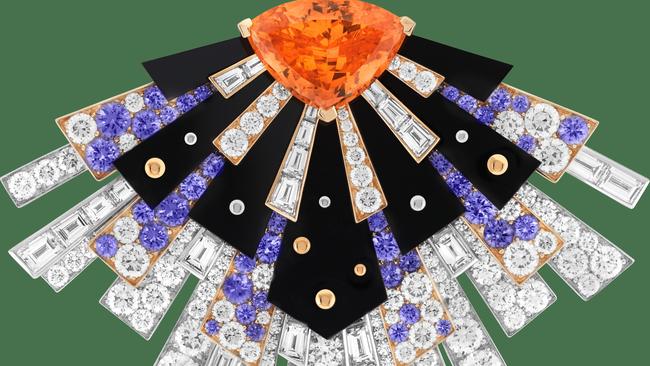
Flammarion founded the world’s first astronomy magazine and is considered one of the first modern science writers, but his work existed as a time when the scientific discoveries were only matched by what the imagination could conjure up about these new realms.
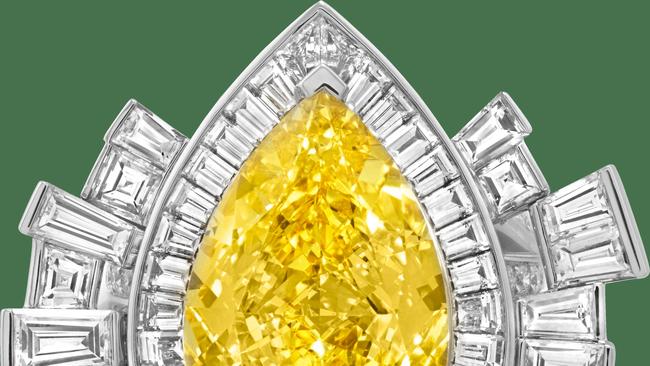
For not only did Flammarion love stars and planets, he believed in the existence of alien life forms, and subscribed to the theory at the time that Mars was red because of its vegetation and there were canals on the planet (it turned out to be an optical illusion due to the instruments that were used). He was the author of dozens of science books, but he also wrote science fiction and was a spiritualist.
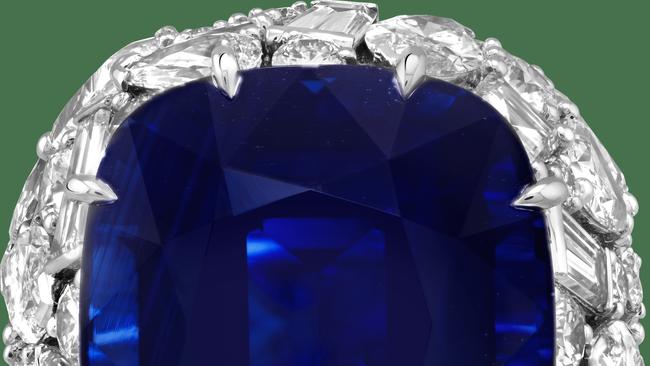
“The maison has always been interested in the instance where observing nature encounters poetry and the imagination,” says Nicolas Bos, president and CEO of Van Cleef & Arpels. “For these high jewellery pieces, we wanted to prolong the adventure that began with Jules Verne in our 2011 collection by exploring the literary and scientific tradition his work forms part of. That led us to the classical author Lucian of Samosata imagining a voyage in space, and to Camille Flammarion, who published his wonderfully illustrated Astronomie populaire in 1880.”
One of the
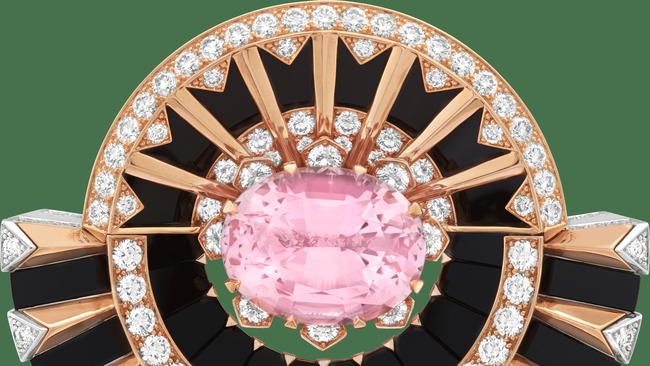
first pieces of the collection is a literal interpretation of Saturn, a clip created from gold and diamonds. The planet is in hammered yellow gold – a feature of Van Cleef & Arpels work in the 1960s and 1970s – and dozens of tiny diamonds have been added to the half-sphere. More diamonds and fine threads of yellow gold create the three rings that surround Jupiter.
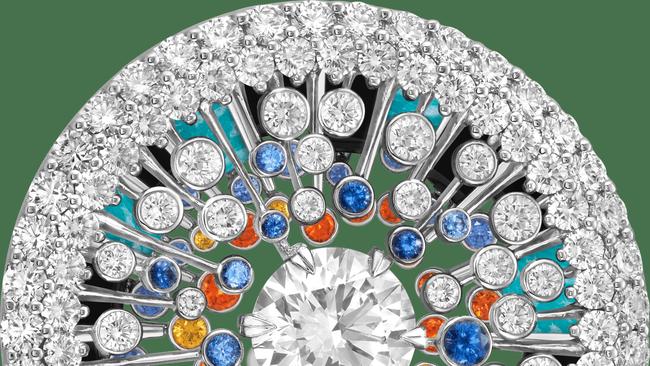
The earth and the moon are celebrated in a bracelet called Terre et Lune using diamonds, baguette-cut sapphires and yellow sapphires. The three-dimensional earth is adorned with sapphires, and each gem has been intricately re-cut to match the curved lines and the underlying metal. The earth’s equator is represented by rose gold and the different continents by diamonds. The moon is made from pyramid-shaped diamonds to reflect its irregular terrain. “Both figurative and poetic, this creation invites the onlooker on a dreamlike escapade between the earth and the moon,” says Bos.
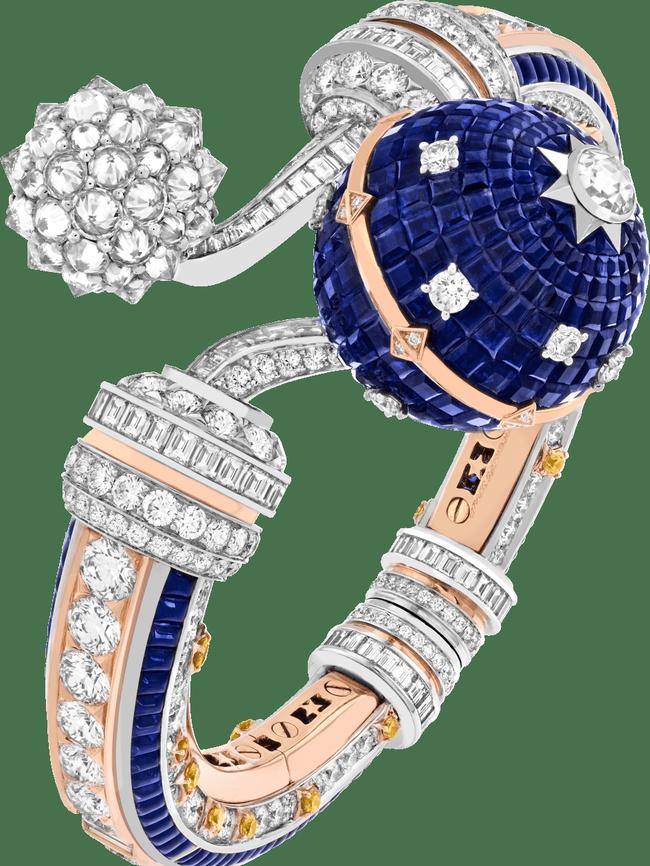
Neptune – the planet farthest from the sun – is represented by a spectacular Madagascan sapphire of no less than 40.52 carats in a diamond-clad ring. “A true collector’s stone, this cushion-cut sapphire draws the eye deep inside its velvety material and intense blue shade, which recalls that of Neptune,” explains Bos. “Evoking its icy rings, diamonds of various cuts and shapes have been meticulously assembled on the ring’s hoop and bezel in a virtuoso feat of stone-setting.”
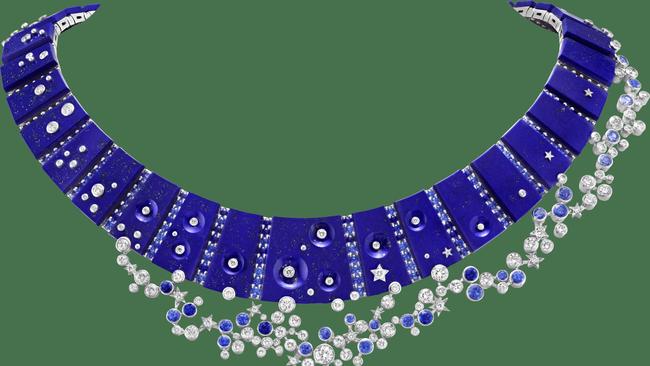
Moving past our solar system, the jewellers at Van Cleef & Arpels looked to the Milky Way for the inspiration for the necklace Ciel De Minuit. It is made of lapis lazuli, a deep blue metamorphic rock, that has been sculptured by hand and then set with diamonds and sapphires to represent the glimmer of stars in the sky that forms the Milky Way. The comet is also behind the creation of the bracelet Sentier D’Etoiles, which features a 69.23 carat sapphire cut in a cabochon (a rounded shape) and encircled by diamonds, more sapphires and tsavorite garnets.
Halley’s Comet takes the form of a necklace created with hundreds of diamonds and one rather significant Fancy Yellow diamond (also known as a canary diamond) that weighs 11.29 carats and symbolises the head of the comet that can be seen from earth every 75 years. There is also Ison, a bracelet inspired by a comet that unfortunately disintegrated into a radiant cloud after passing too close to the sun in 2013. Its radiance is represented by scores of rubies and diamonds that trail off into a fiery tail that elegantly wraps around the wrist of the wearer.




To join the conversation, please log in. Don't have an account? Register
Join the conversation, you are commenting as Logout